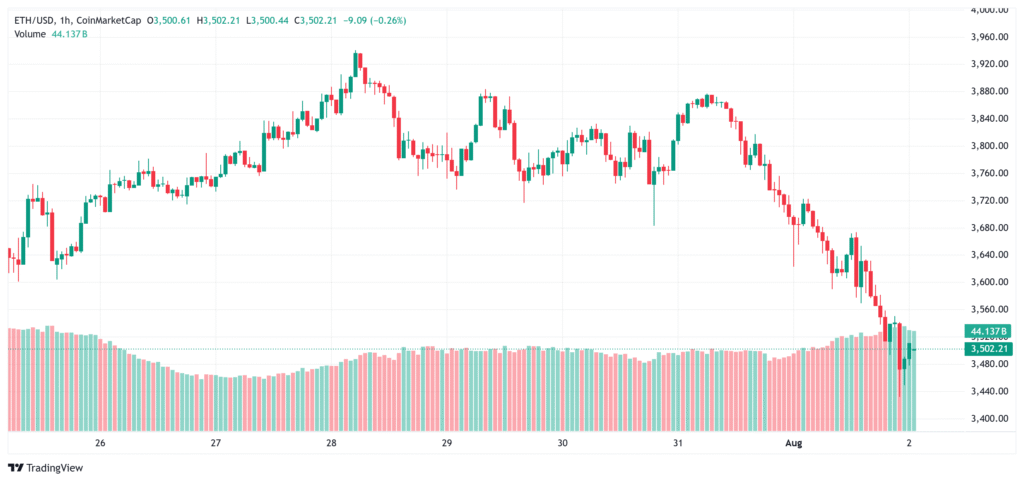Ethereum has sprinted ahead of Bitcoin over the past month, buoyed by the passage of the U.S. GENIUS Act. Ethereum’s rally, which lifted its price by over 50%, contrasts sharply with Bitcoin’s more modest ~10% gain in the same period. This legal milestone has energized markets and positioned Ethereum as a leader in the current crypto cycle.
The GENIUS Act – passed in July 2025 – establishes clear legal frameworks for stablecoins, including reserve requirements, consumer protections, and issuer standards. Since top stablecoins like USDC and Tether operate primarily on Ethereum’s network, investor confidence in the Ethereum ecosystem has surged.
This breakthrough reduces regulatory uncertainty within the Ethereum space and opens the door for corporate stablecoins from major players such as Walmart and Amazon—the expectation of these issuers selecting Ethereum as their base network has added fuel to investor optimism.
Institutional Flow and ETF Catalysts
Institutional demand has followed quickly: Spot Ethereum ETFs launched by firms like BlackRock, Fidelity and Grayscale have enjoyed trading volumes ranging from 30% to 49% gains, with monthly flows reaching $123.5 billion. That compares to relatively restrained growth in Bitcoin products, helping tilt attention toward Ethereum.
Corporate treasuries are also ramping up exposure. Companies like Bitmine Immersion and the Ether Machine have disclosed large ETH purchases, reinforcing the belief that Ethereum may evolve into a mainstream corporate treasury asset.
Why Ethereum Is Now Seen as the Market Leader?
Ethereum’s outperformance reflects a combination of fundamental change and speculative momentum. The GENIUS Act delivered regulatory clarity, but market sentiment also plays a role: ETH is widely seen as the hub for innovation—with DeFi protocols, enterprise smart contracts, NFTs, and stablecoin infrastructure all built on its chain.
Ethereum’s upcoming network upgrades (including scaling and gas optimization) add further appeal. In contrast, Bitcoin still faces regulatory ambiguity—especially under the broader SEC policy landscape—so investor rotation toward Ethereum seems logical.
Read Also: US Tariff Shock Sends Bitcoin Below $115K
Market Reactions
Bitcoin’s slower performance underscores the shift. While Bitcoin did gain about 10% in the past month, analysts note it remains subject to macroeconomic risks: Fed rate policy, inflation readings, and cooling retail inflows.

Ethereum’s momentum, though impressive, is not without risks. Regulatory uncertainty still looms, particularly around the pending CLARITY Act, which would define regulatory roles between the SEC and CFTC. A negative outcome could dampen regulatory enthusiasm and stall institutional adoption.
Individual investors and crypto traders should consider the evolving landscape carefully.
Ethereum’s rising role suggests that developers building stablecoin and DeFi products will increasingly choose its network. For portfolio allocations, diversifying into ETH‑based products aligned with new ETF flows and enterprise issuance may offer long‑term growth advantages.
Conversely, Bitcoin still retains a reputation as “digital gold,” but without ETF momentum comparable to Ethereum’s, it may lag in the current legislative environment. Investors should track regulatory developments around CLARITY for signs of future shifts.
